An exhibition called Dalit: A Quest for Dignity has opened in Nepal, featuring powerful photos and testimonies that document the experiences of the Nepali Dalits, who are considered the country’s lowest caste. Dalits, previously known as “untouchables,” face discrimination in their social and working lives.
The exhibition is part of Photo KTM, a two-week international photo festival that begins in Kathmandu on Friday. Unlike most photo exhibitions, Photo KTM aims to be unique by using the streets and alleys of the historic town of Patan as its gallery space; organizers say work by artists from Saudi Arabia, Iran, and Cambodia among others will be displayed on walls along the streets that were damaged by last year’s earthquake.
Curator Diwas Raja KC said it is important to accurately record the history of Dalits. “Records are typically tools of oppression, techniques of power,” he said. “They are means by which the rich have exploited the poor and the powerful have dominated the powerless.”
The images below, provided exclusively to BuzzFeed News, show a collection of photos and stories from the exhibition, including details of the segregation of drinking water, debts between castes, and the suspected murder of a man who eloped with a young woman from a different caste.
Kathmandu, 1963
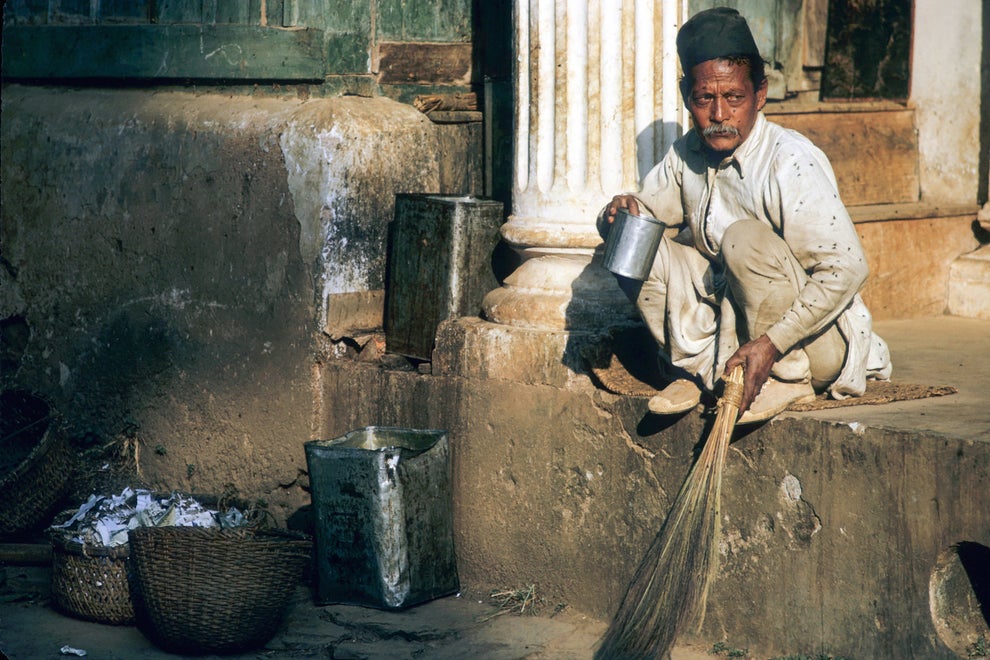
Untouchability is commonly upheld through a prohibition on sharing of water and cooked food. During a morning break at Pharping Boarding School, everyone was served tea in ceramic tea cups, except for this sweeper, who, because of his caste, was given his tea in an empty tin can. Jim Fisher
Kailali, 2007
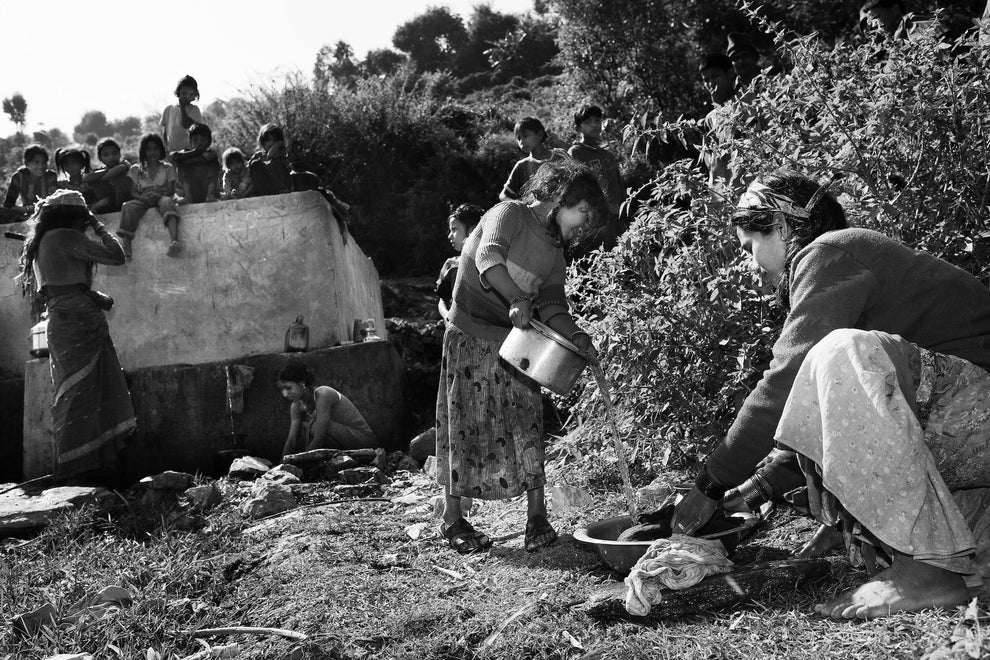
The municipality in Tikapur bowed to the demand of upper-caste villagers to separate their water supply from that of Dalits. At the Dalit tap seen here, this separation is welcome, for it emancipates them from the daily humiliation of awaiting the goodwill of an upper caste to pour them some water from afar. Jakob Carlsen
Bajhang, 1989

There were systems established to keep Dalits poor and customs to remind them that poverty is their rightful place. Here a family of Sarkis are seen in their quarters in Bajhang. Mary Cameron
Mahottari, 2016
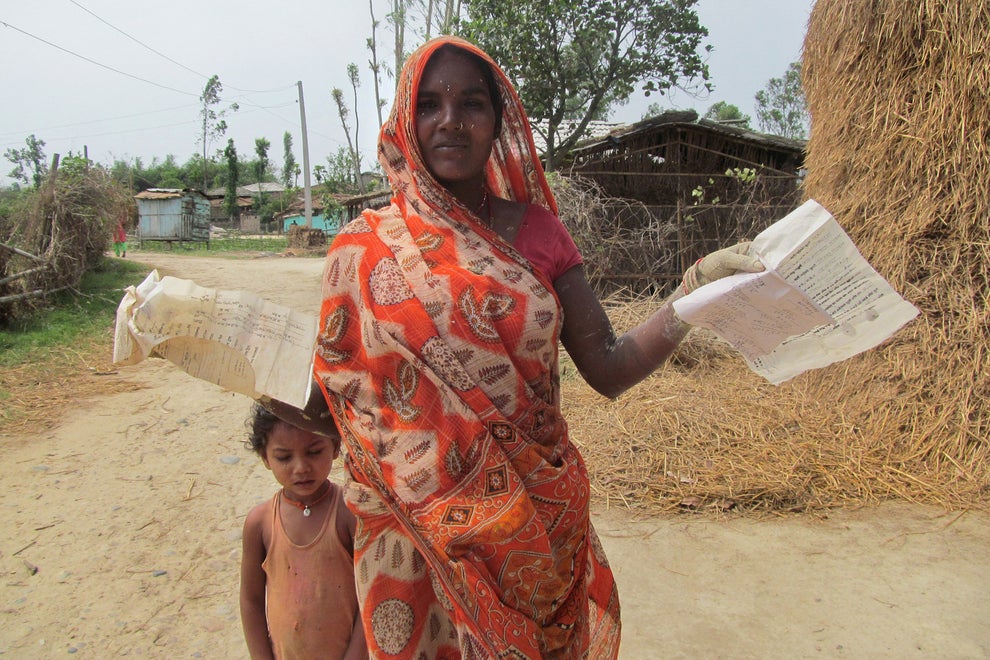
Kalasiya Devi Khatwe Mandal is driven to desperation. Her husband took a loan to migrate abroad for work. The moneylenders are now attempting to claim her house. Loan standards in rural Nepal can be extremely exploitative. Ekal Silwal
Doti, 2007
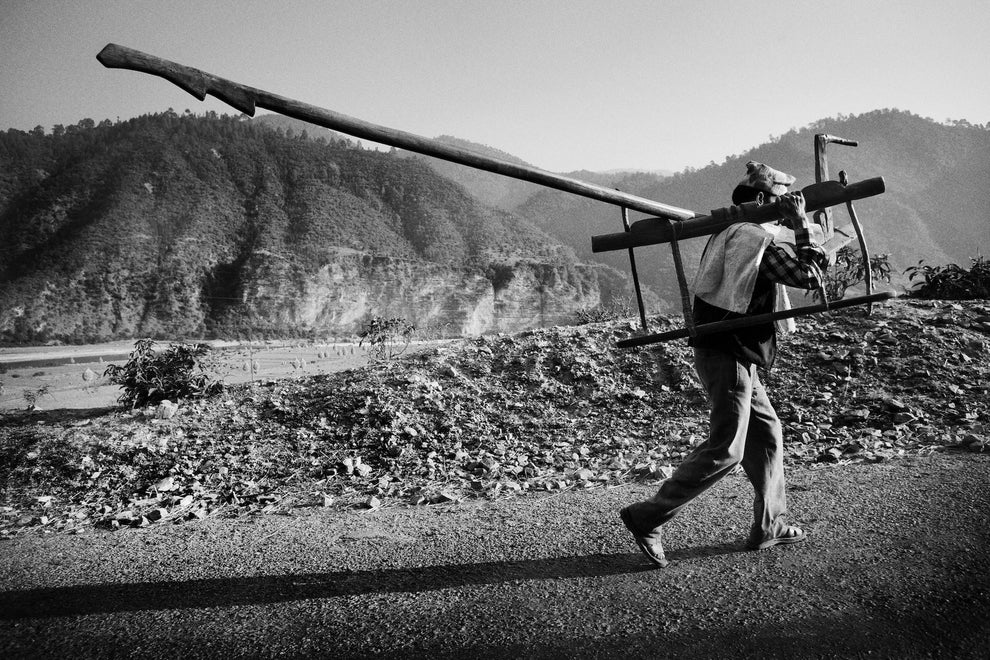
Barred in many places from landownership, Dalits have only their bodies and their labor, which too were held in arrangements of servitude and dependency. They were often hopelessly in debt and lived at the call of their high-caste landlords. Gore Sunar has no hope of repaying his three installments of debt to the landlords. So he does whatever they tell him to do in fear they will ask for repayment and reminds his nephew to do the same after he is gone. Jakob Carlsen
Kaski, 1977
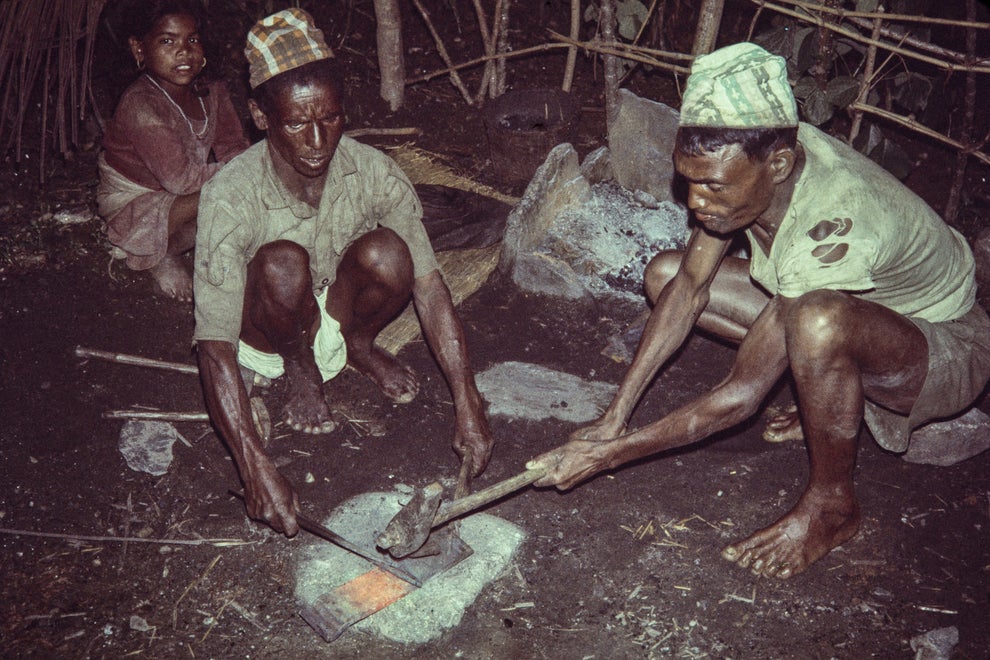
Kami workers near Pokhara shaping metal. The vast majority of Dalits may have been agricultural laborers, but it was their supplementary occupations that defined their caste identity. High castes typically attributed the stigma of untouchability to these occupations and kept away from them. Rich Pfau
Okhaldhunga, 1970

Dalits were the bricoleurs of Nepal: skilled at many things, holding an array of tools, and tinkering with the substances they have for multiple and creative uses. Here a blacksmith acts as a dentist to remove a tooth from a porter somewhere on the trail between Okhaldhunga and Namche. Bill Hanson
Gulmi, 1966
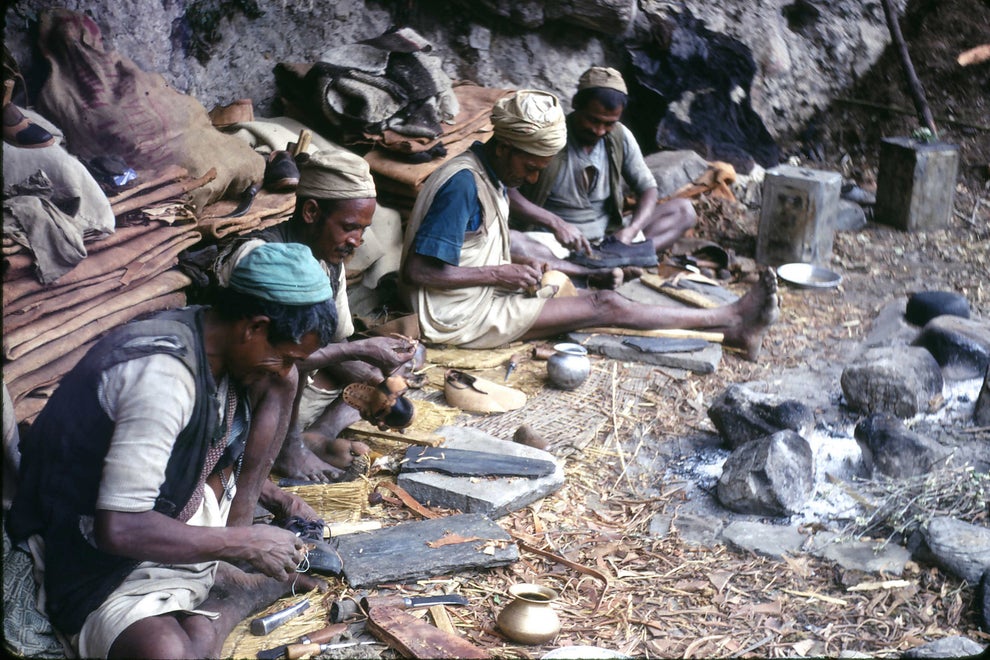
Dalits were the repositories of technical knowledge and they traveled around villages carrying and wielding their tools. New leather shoes are made and damaged ones repaired by this group of cobblers who set up business along the trail between Bharse and Tansen. Bill Lambeth
Parsa, c.1966–68
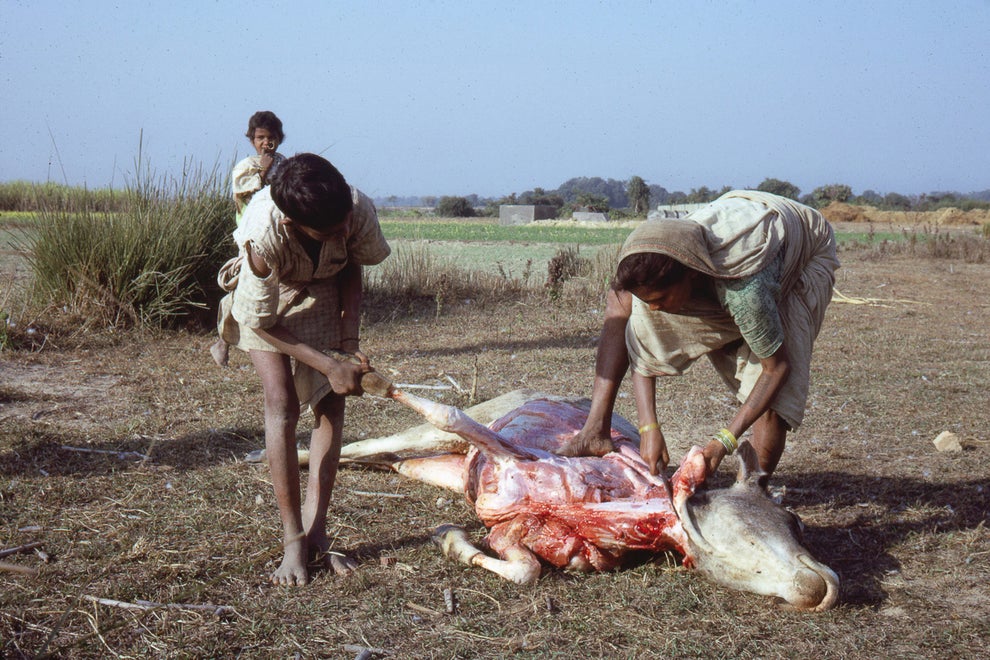
Cowhide can provide a little income to those with limited economic opportunities. But handling dead cows is considered socially degrading and therefore expected of Dalits to perform. In Biruwa Guthi, after this Dalit woman skins the carcass, villages dogs and vultures devour the remains. Bob Nichols
Bhojpur, 1964
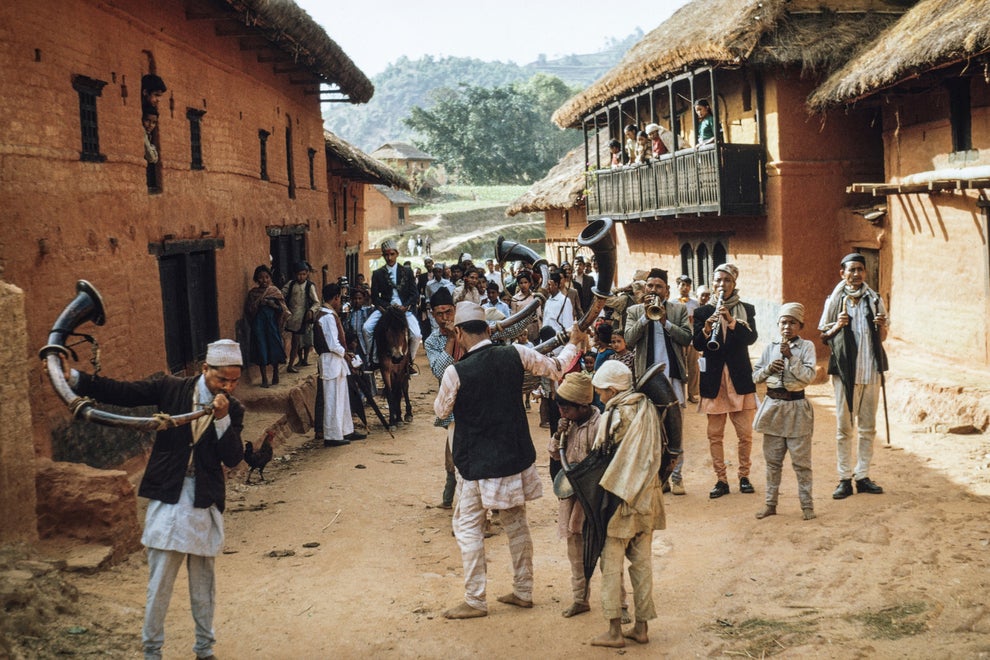
Dalits were at the heart of Nepali public music tradition. Damais in rural Nepal had a musical duty towards other caste members. Customary obligations have occasionally been a cause for maltreatment of Dalits, as these public events for which Dalits played their music were also occasions for demonstrating caste disciplines. But these practices have also aided the Dalit claim for cultural distinction and achievement. A Damai ensemble leads a wedding procession through a small village bazaar in Bhojpur. Larry Daloz
Gulmi, 1966

Gandarvas filled the hilly landscapes with the sound of their songs, playing their sarangis for the common people. They traveled from village to village singing songs of relevance. At the peak of the Panchayat period, this man sings songs about national glory: “Hamro Tenzing Sherpale Chadhyo Himal Chuchura” (Our Tenzing Sherpa has climbed to the top of Himalayas). Carl Hosticka
Doti, 2007
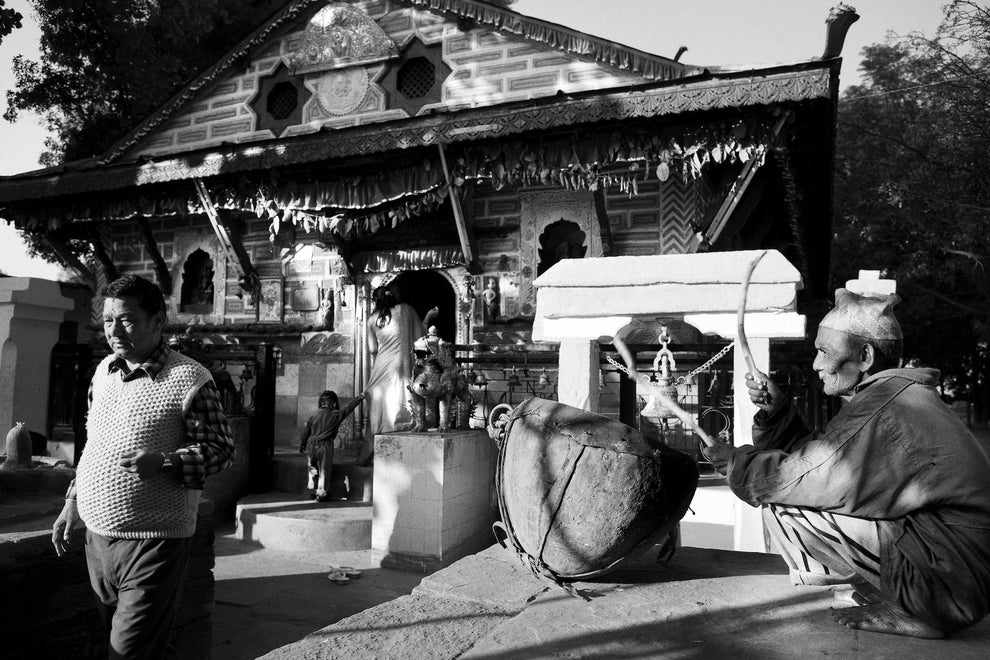
At 74, Hira Parki had been playing his drum outside the Shaileshwari Temple since he was 10 years old. He had never entered the temple. Even after Dalit activists fought and won the right to enter the temple, he was too afraid to enter. When activists dragged him in he screamed, fearing death, and passed out. Jakob Carlsen
Kathmandu, 1963

The social and political changes since the 1950s provided Dalits a context for self-fashioning a new political identity. T.R. Bishwakarma gives a speech after the arrival of Muluki Ain in 1963 under King Mahendra. The developmental and anti-discriminatory agendas of the new Panchayat government were welcomed by Dalit activists as progress on the issue of caste. By the 1980s, however, T.R. Bishwakarma led a more radical path to Dalit emancipation and also authored the first demand for reservation. Mithai Devi Bishwakarma
Delhi, c.1970
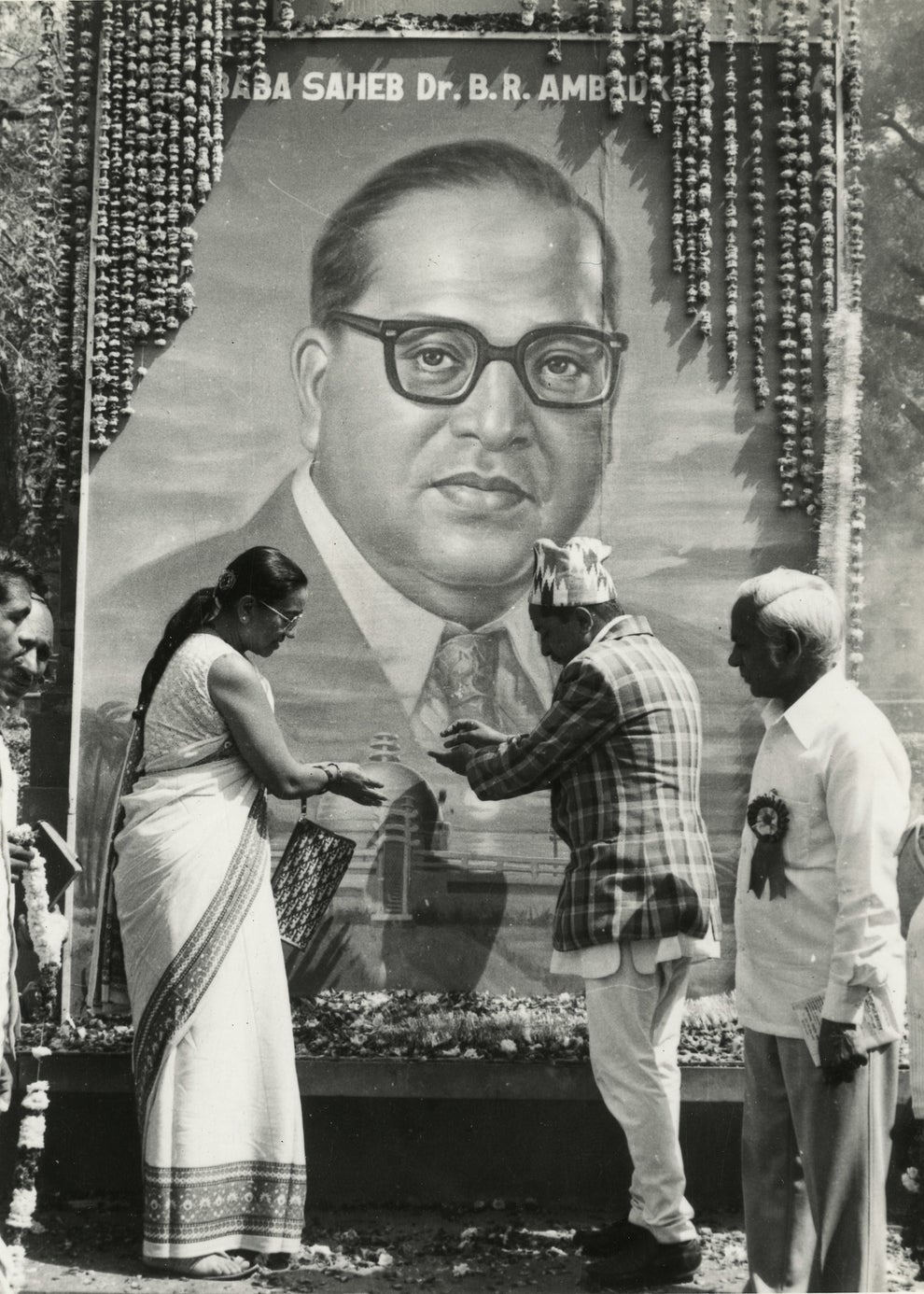
T.R. Bishwakarma and Mithai Devi Bishwakarma pay homage to B.R. Ambedkar in Delhi during Bhim Jayanti. The Dalit movement in India has been a significant influence for Nepali Dalits. Mithai Devi Bishwakarma
Kathmandu, 2015
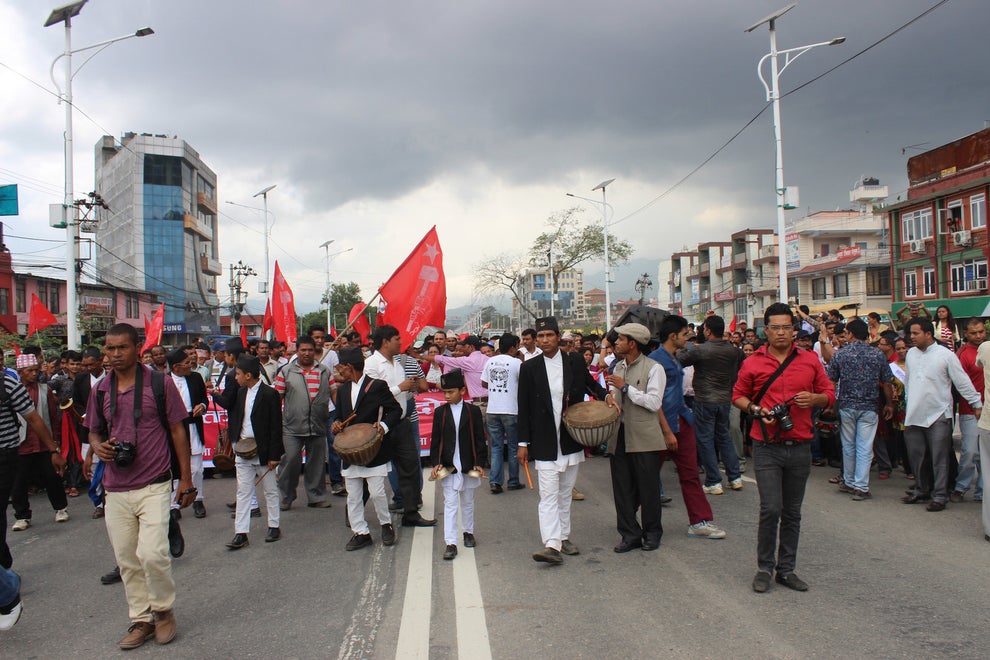
Since 1990, Dalit activists have stepped up the fight to be recognized as a political constituency and for their identity to be institutionalized within the state and the constitution. Activists take out the panchebaja, the traditional musical ensemble associated with Dalits, at a political rally organized to register Dalit dissatisfaction over the latest constitution of Nepal.
Bardiya, 2009

Inclusion continues to be a struggle for Dalits. Badi students in Bardiya report experiencing prejudice at school. It is not uncommon for Dalit students to drop out and fall back on traditional occupations.NayanTara Gurung Kakshapati
Dhading, 2016
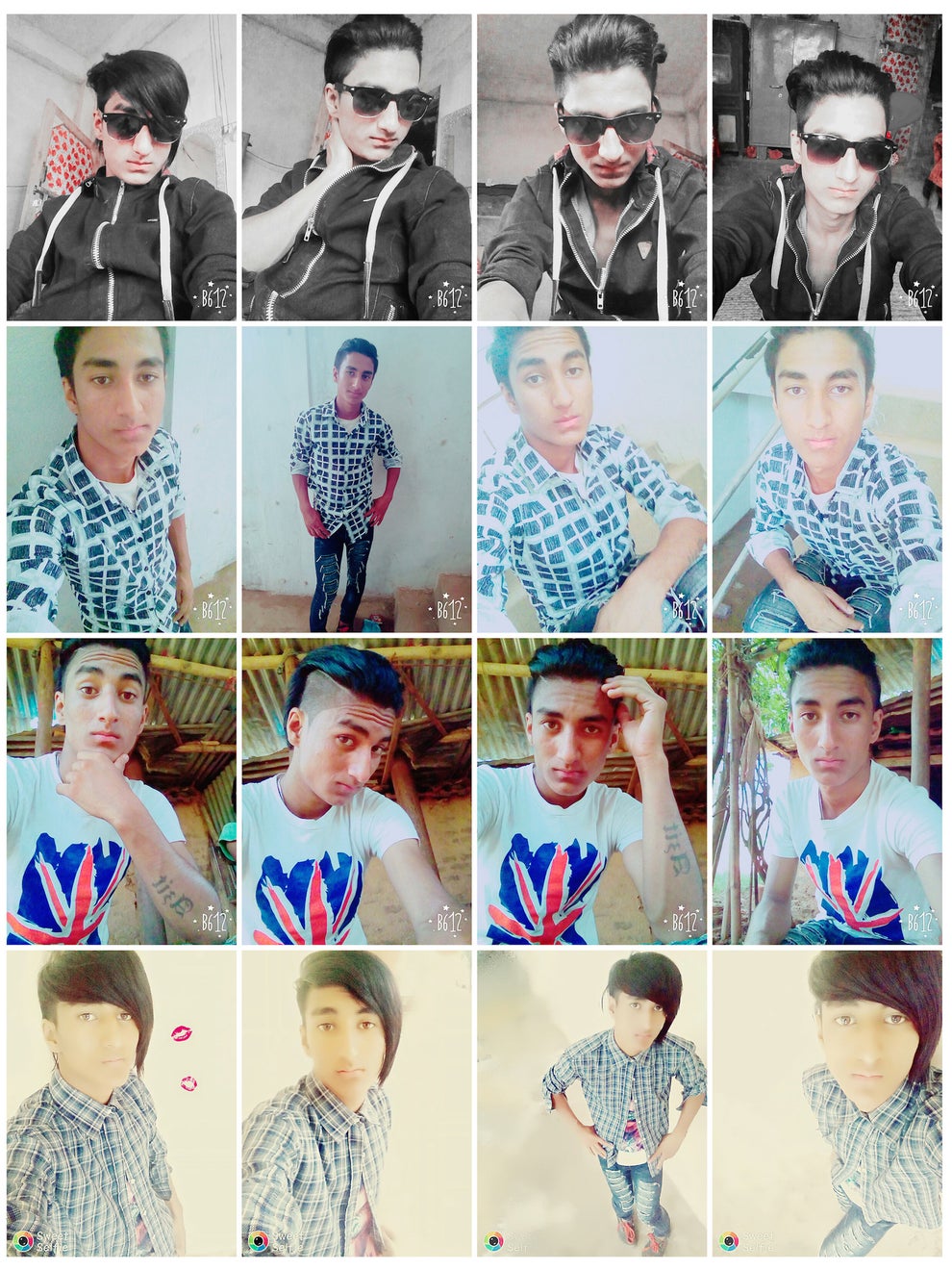
Caste humiliation often takes the form of extreme violence. These are selfies from the mobile phone of Ajit Mijar, who was recently found dead after eloping with his Brahmin girlfriend. It was discovered that his death was staged to appear like a suicide and the police of Kumpur, where the incident took place, buried the body before news got out. The girl was forcibly taken away and grounded by her parents. Ajit Mijar


 4 · Oct 20, 2016 12:08am
4 · Oct 20, 2016 12:08am








